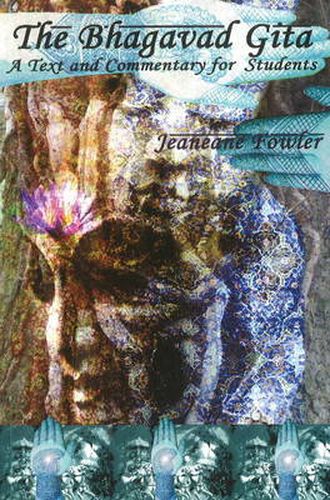Readings Newsletter
Become a Readings Member to make your shopping experience even easier.
Sign in or sign up for free!
You’re not far away from qualifying for FREE standard shipping within Australia
You’ve qualified for FREE standard shipping within Australia
The cart is loading…






Jeaneane Fowler provides a text and detailed commentary on this important Hindu scripture, which is a dialogue between Arjuna the man and Krishna the God. Major Hindu concepts are examined in depth, and the background to the Gita is presented in a comprehensive introduction. Yoga is the key feature of the Gita but it has its own interpretation of what that yoga should be: thus, yoga features not only in each of the pathways of knowledge, desireless action and devotion, but in the way in which the divine is understood. The chapters of the Bhagavad Gita therefore describe Arjunas despondency followed by The Yoga of Sankhya, Action, Knowledge, Renunciation, Meditation, Knowledge and Realization, the Imperishable Brahman, Royal Knowledge and Royal Mystery, Manifestation, the Vision of the Universal Form, Devotion, the Differentiation of the Kshetra and Kshetrajna, the Differentiation of the Three Gunas, the Supreme Purusha, the Differentiation of the Divine and the Demonic, the Differentiation of the Threefold Shraddha and, finally, The Yoga of Liberation and Renunciation. The book also contains detailed notes to the Gita chapters, a Further Reading section, a combined Glossary and Index of Sanskrit Terms, and an Index of English words. The cover of the book is replete with symbolism. Krishna is always represented as blue in colour, hence the colour of the hands in the cover design. The chariot of Krishna and Arjuna is to be seen in the motif at the base, while the triple motif symbolizes the triple paths of the Gita action without desire for results, knowledge and devotion. There are also three strands that make up all phenomena light and radiance, energy, and inertia, as well as three aspects of the divine in the Gita the totally transcendent Absolute, the manifest deity that is also the essence of all things, and the personal God to whom devotion can be given. The main image of Krishna is superimposed on the roots of the ashvattha tree that features in chapter 15: its branches reach down into the earth and its roots ascend upwards and it represents phenomenal existence.
$9.00 standard shipping within Australia
FREE standard shipping within Australia for orders over $100.00
Express & International shipping calculated at checkout
Jeaneane Fowler provides a text and detailed commentary on this important Hindu scripture, which is a dialogue between Arjuna the man and Krishna the God. Major Hindu concepts are examined in depth, and the background to the Gita is presented in a comprehensive introduction. Yoga is the key feature of the Gita but it has its own interpretation of what that yoga should be: thus, yoga features not only in each of the pathways of knowledge, desireless action and devotion, but in the way in which the divine is understood. The chapters of the Bhagavad Gita therefore describe Arjunas despondency followed by The Yoga of Sankhya, Action, Knowledge, Renunciation, Meditation, Knowledge and Realization, the Imperishable Brahman, Royal Knowledge and Royal Mystery, Manifestation, the Vision of the Universal Form, Devotion, the Differentiation of the Kshetra and Kshetrajna, the Differentiation of the Three Gunas, the Supreme Purusha, the Differentiation of the Divine and the Demonic, the Differentiation of the Threefold Shraddha and, finally, The Yoga of Liberation and Renunciation. The book also contains detailed notes to the Gita chapters, a Further Reading section, a combined Glossary and Index of Sanskrit Terms, and an Index of English words. The cover of the book is replete with symbolism. Krishna is always represented as blue in colour, hence the colour of the hands in the cover design. The chariot of Krishna and Arjuna is to be seen in the motif at the base, while the triple motif symbolizes the triple paths of the Gita action without desire for results, knowledge and devotion. There are also three strands that make up all phenomena light and radiance, energy, and inertia, as well as three aspects of the divine in the Gita the totally transcendent Absolute, the manifest deity that is also the essence of all things, and the personal God to whom devotion can be given. The main image of Krishna is superimposed on the roots of the ashvattha tree that features in chapter 15: its branches reach down into the earth and its roots ascend upwards and it represents phenomenal existence.